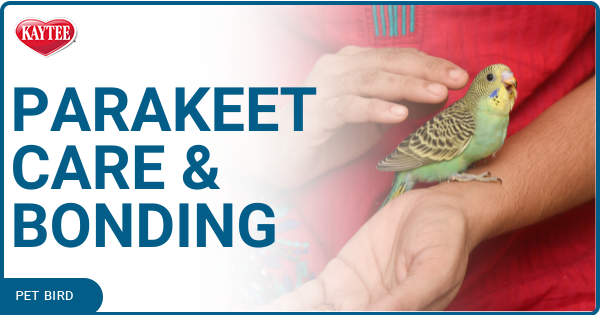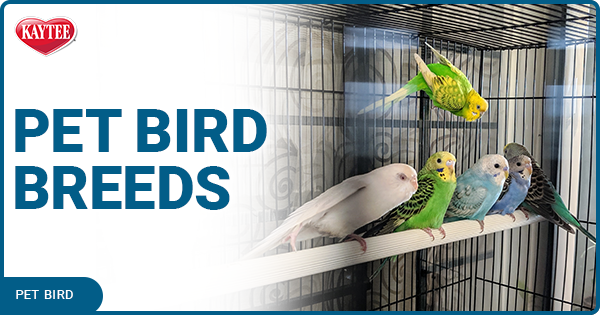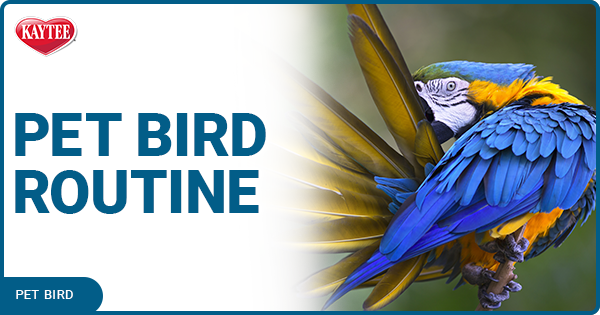Pet birds have distinctive voices and can have a whole repertoire of whistles, chirps, chatters, shrieks and other sounds in their language. While budgies are generally the quietest pet birds, knowing which birds are loud and which are quiet can help you choose a feathered family member with just the level of outspokenness you prefer.
Why Birds Vocalize
Making noise is a natural, instinctive behavior for all birds, including pets. Birds communicate with a wide range of vocalizations, from twitters, chirps and chips to whistles and songs. Some birds can also mimic other noises, including ring tones, car horns, tools, other animals and even human speech.
Wild birds vocalize to woo mates, attract members of their flock to a food source, warn other birds of a nearby predator, claim territory or show their dominance in the flock. Pet birds may not need to vocalize for survival as wild birds do; however, they still use different noises to attract attention, alleviate stress and communicate with their flock, including their human flock members.
Loudest to Quietest Pet Birds
No matter why a bird makes noise, the vocal range and decibel level can vary with species and individuals. Just as some humans have naturally louder voices, some individual birds are also louder than others. Human speech and laughter are generally rated at 60–65 decibels. On the louder end of the sound spectrum, a jumbo jet taking off is roughly 140– 165 decibels, depending on how far away the listener is positioned. Pet bird sounds can also have an incredible decibel range. Decibels are used to compare the volume of pet bird chatter to other recognizable sound levels.
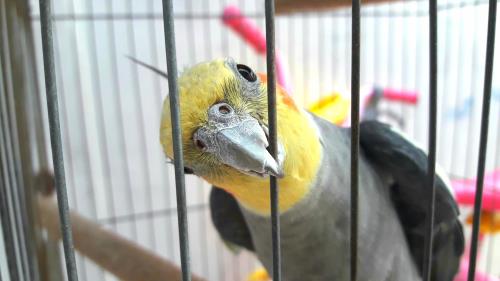
Cockatoos: The Loudest Pet Birds
While cockatoos are known for their affectionate natures, these medium-sized pet birds can be the loudest of the flock, with voices that reach up to 135 decibels with their chirps. In the wild, cockatoos use loud noises to contact other cockatoos and warn of danger, but as pets, these birds will be just as loud when they seek attention or are bored. These calls can come at any time throughout the day and may persist until the birds are pacified.
Conures: Beautiful but Loud
Conures are smaller, beautifully colored parrots, and their voices match their bright plumage. A conure's powerful voice can reach 120 decibels, though they usually start with softer chirping that builds in volume. These birds use louder noises to attract attention, so lots of bonding time is appreciated by these feathered friends. Male green cheek conures are quiet compared to sun conures, so their personality varies by species.
Macaws: Big Birds with Big Voices
Many people assume that macaws have the loudest voices because they are some of the largest pet birds, and it's true they can be very vocal. On the decibel scale, however, macaws' loudest calls only reach about 105 decibels or roughly the same volume as a snowmobile engine or rowdy sports event! In the wild, macaws love to make noise for 25–30 minutes in the morning and evening to contact other members of their flock, but pet macaws may chirp whenever they want attention. These intelligent birds can also learn to talk and mimic many other noises.
African Gray Parrots: Constant Chatterers
African grays are very intelligent birds that make popular pets because of their vocal abilities. While these birds aren't overly loud, they can talk and chatter throughout the day, often using human words or mimicking other noises at levels up to 70 decibels. This is only slightly louder than typical human talking or laughing, but it can still seem loud if the chatter never stops because these birds vocalize frequently.
Budgerigars: Quiet Companions
One of the most popular pet birds, the budgerigar — or budgie — is also one of the quietest. These birds do chirp and chatter, particularly in groups, but their voices only generally reach 65–70 decibels at their loudest. Budgies are even quieter as solo pets or when kept in pairs, but a group of budgies can still seem loud as they try to outdo one another, just as they would in the wild. Female budgerigars are generally quieter than males.
How to Quiet a Pet Bird
No matter how loud a bird's voice may be, it's sometimes desirable to quiet a feathered vocalist. First, avoid rewarding a bird's loud squawks or offering treats to keep a bird quiet — this only reinforces the unwanted behavior. Similarly, do not raise your voice to talk back, which the bird will interpret as more communication.
Instead, provide your bird a new chew or toy, which alleviates boredom leading to excess noise. A gentle mist bath can also calm a bird by encouraging it to preen rather than chatter. Keeping a regular feeding routine is another way to minimize louder “hungry" calls.
Finally, lowering nearby noises such as radio or television volume or closing a window if there are loud outdoor noises can quiet a noisy bird that competes with other sounds. If you gently whisper at your bird, you can also get its attention and lower its volume as it tries to listen and interact with you on the same vocal level.
No matter what type of pet bird you have, they are sure to make noise. This is natural, and birds have different volume levels and types of vocalizations. By understanding their language, you can choose a pet bird that best suits your auditory preferences, and you will better know how to communicate with your feathered friend.
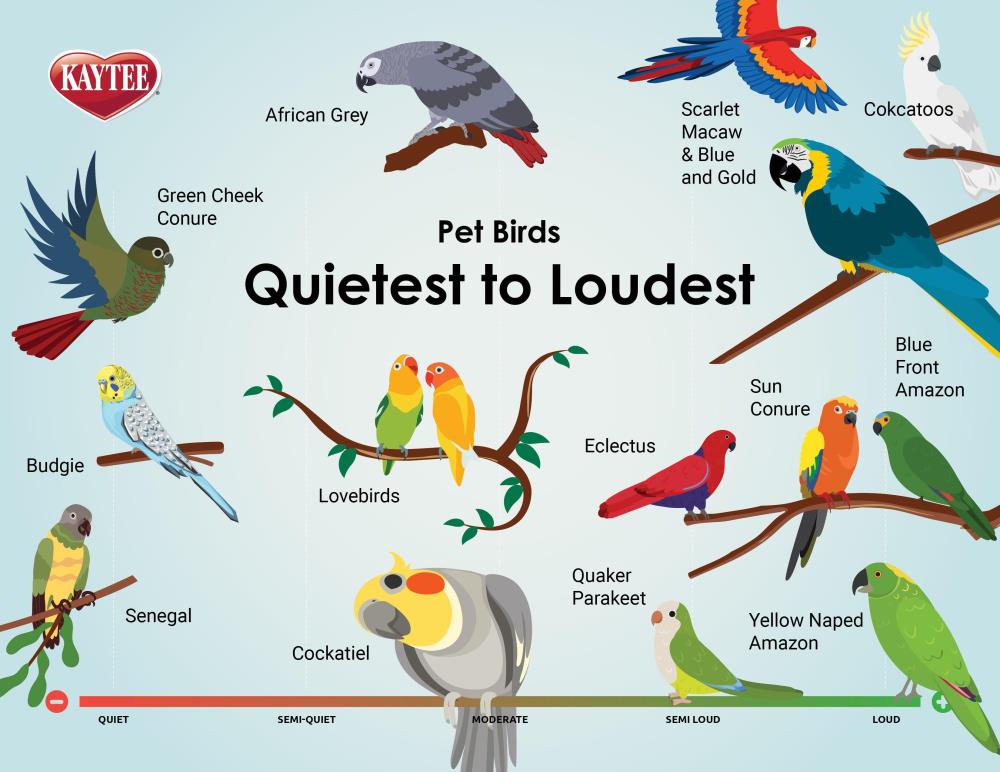
Resources:
Watching Backyard Birds — Why Do Birds Sing?
Bird Street Bistro — The 8 Loudest Parrots That Make Great Pets
West Coast Tropical Bird Studio — Which Birds Are the Most Noisy?
All About Parrots — Which Parrot Makes the Least Noise?
Before you can bring a bird into your home, you must purchase everything you will require for his care. Fortunately, all the items your pet will need should be available from your local pet store. The following are the basic must-have supplies.
Habitat
The size of the habitat you need will depend on the bird (or birds) you plan to keep, but a good rule of thumb is to house your bird in the largest habitat that you can afford and have room for in your home. (If you can't purchase or place a very large habitat, you shouldn't acquire a large bird.)
Your habitat should be square or rectangular rather than round to provide your pet with more room to fly and move. Also, the bars should be evenly spaced, not tapered toward the top. In a habitat with tapered bars, a bird can get his toe, wing, or even his head caught where the bars come together, causing serious injury. The habitat should also have a removable grate at the bottom (usually made of metal) above the habitat tray that catches the bird's waste and prevents him from getting to it.
The habitat itself should be made of metal or a combination of metal and plastic (combo habitats for small birds only). Stainless steel (best), powder-coated steel (better), and galvanized after weld (good) suitable habitat materials—other metals may contain harmful toxins that your bird could ingest. Acrylic habitats can also work well for smaller birds because the solid walls prevent mess, but moisture can build up in the habitat if it doesn't have adequate ventilation.
Bedding/Habitat Lining
A variety of materials can be used to line your bird's habitat, but the best options are newspaper or commercial bird litters such as Kaytee Walnut Litter. Both are safe, inexpensive, easy to replace, and clearly show a bird's droppings, which can be important for monitoring his health. (A change in droppings may indicate a potential health problem.) If you suspect health issues due to dropping appearance, place wax paper down as a liner to get a really good look at the droppings.
Food and Water
Stainless steel is the ideal material for food & water cups because it's easy to scrub and disinfect. Although your habitat may come with a couple plastic cups, these can become scratched, allowing bacteria to grow in the crevices. Birds can also be taught to use a water bottle, ensuring they cannot reach it and chew through it.
Food
For long-term good health provide a balanced diet, preferably a pelleted of extruded diet. Supplement with fresh vegetables and fruits depending on the species. High value items like high fat seed and nuts make excellent training treats. A seed mix diet may be deficient in minerals, especially calcium, as well as vitamins and amino acids, so mineral block or cuttlebone should be provided. This should not be necessary if the bird is eating primarily a pelleted or extruded diet.
A breeding female may need additional calcium to form eggs.
Perches
Perches can be made of natural branches, wood, plastic or PVC, rope, concrete, or pumice. Each has its own advantages and disadvantages. Offer your bird perches of assorted materials which vary in diameter. A bird who stands on the same perch consistently may develop foot disorders, especially if it is hard and abrasive or too large for its feet. Ideally the foot should wrap approximately ¾ of the way around the perch. Change out the perches, as you do bird toys this way a bird that likes to stand in the exact same spot will be forced to stand on a different perch.
Bird Bath
Birds bathe in a variety of ways. Some birds love to be misted with fine mist from a bottle of warm water, others love to bathe in a shallow bowl while others still will like to join you in the shower! That’s right, you can purchase a shower perch and let your bird spend quality time with you. Baths are very important to a birds’ health, remember many birds come from a tropical climate that is very humid and wet. Play with bathing to find out which way your bird likes best, you want bathing to be enjoyable – not stressful! Bathing supplies can be purchased at your local pet store or department store.
Toys and Enrichment
Most birds benefit from having items in their habitat to keep them active and entertained. A wide variety of toys are available, and different birds enjoy different types of toys.
Provide a variety of toy types for your bird in the habitat setup: thinking toys (items that stimulate his mind); action toys (items that make a lot of noise or require your bird to move); comfort toys (items that your bird can enjoy calmly and quietly); and toys to destroy (items he can chew to keep his beak in good condition). You’ll quickly see which toys your bird prefers and this will allow you to keep him well entertained. A bored bird can quickly pick up bad, remember birds in the wild are very active and are ever moving and foraging.
There are other ways to enrich your bird’s life than just toys, although toys are a necessary item! You can purchase or play video’s for your birds with other bird sounds or just interesting audio. A more current approach is to enrich your bird by providing foraging opportunities, treats hidden within toys or homemade items such as a cardboard tube and coffee filters. Be creative, but safe!
Travel Carrier
A travel carrier is necessary for taking your bird to the vet's office and other places. Soft fabric carriers are popular, but if your bird is ill they are difficult to disinfect. Plastic airline kennels are also practical and easy to disinfect if needed. It should also have adequate ventilation and a place to put food and water dishes. If you plan to travel with your pet, select a model which will fit under the seat of an airplane.
It’s important to make the carrier a safe and desirable destination, this can be done by using it as a place to offer treats and allow your bird to walk in on its own to fetch those treats. If a bird is caught up and placed aggressively in the carrier, it will quickly become a scary place they don’t want to go and each time will become harder and harder to get your bird into it.
Before you can bring a bird into your home, you must purchase everything you will require for his care. Fortunately, all the items your pet will need should be available from your local pet store. The following are the basic must-have supplies.
Habitat
The size of the habitat you need will depend on the bird (or birds) you plan to keep, but a good rule of thumb is to house your bird in the largest habitat that you can afford and have room for in your home. (If you can't purchase or place a very large habitat, you shouldn't acquire a large bird.)
Your habitat should be square or rectangular rather than round to provide your pet with more room to fly and move. Also, the bars should be evenly spaced, not tapered toward the top. In a habitat with tapered bars, a bird can get his toe, wing, or even his head caught where the bars come together, causing serious injury. The habitat should also have a removable grate at the bottom (usually made of metal) above the habitat tray that catches the bird's waste and prevents him from getting to it.
The habitat itself should be made of metal or a combination of metal and plastic (combo habitats for small birds only). Stainless steel (best), powder-coated steel (better), and galvanized after weld (good) suitable habitat materials—other metals may contain harmful toxins that your bird could ingest. Acrylic habitats can also work well for smaller birds because the solid walls prevent mess, but moisture can build up in the habitat if it doesn't have adequate ventilation.
Bedding/Habitat Lining
A variety of materials can be used to line your bird's habitat, but the best options are newspaper or commercial bird litters such as Kaytee Walnut Litter. Both are safe, inexpensive, easy to replace, and clearly show a bird's droppings, which can be important for monitoring his health. (A change in droppings may indicate a potential health problem.) If you suspect health issues due to dropping appearance, place wax paper down as a liner to get a really good look at the droppings.
Food and Water
Stainless steel is the ideal material for food & water cups because it's easy to scrub and disinfect. Although your habitat may come with a couple plastic cups, these can become scratched, allowing bacteria to grow in the crevices. Birds can also be taught to use a water bottle, ensuring they cannot reach it and chew through it.
Food
For long-term good health provide a balanced diet, preferably a pelleted of extruded diet. Supplement with fresh vegetables and fruits depending on the species. High value items like high fat seed and nuts make excellent training treats. A seed mix diet may be deficient in minerals, especially calcium, as well as vitamins and amino acids, so mineral block or cuttlebone should be provided. This should not be necessary if the bird is eating primarily a pelleted or extruded diet.
A breeding female may need additional calcium to form eggs.
Perches
Perches can be made of natural branches, wood, plastic or PVC, rope, concrete, or pumice. Each has its own advantages and disadvantages. Offer your bird perches of assorted materials which vary in diameter. A bird who stands on the same perch consistently may develop foot disorders, especially if it is hard and abrasive or too large for its feet. Ideally the foot should wrap approximately ¾ of the way around the perch. Change out the perches, as you do bird toys this way a bird that likes to stand in the exact same spot will be forced to stand on a different perch.
Bird Bath
Birds bathe in a variety of ways. Some birds love to be misted with fine mist from a bottle of warm water, others love to bathe in a shallow bowl while others still will like to join you in the shower! That’s right, you can purchase a shower perch and let your bird spend quality time with you. Baths are very important to a birds’ health, remember many birds come from a tropical climate that is very humid and wet. Play with bathing to find out which way your bird likes best, you want bathing to be enjoyable – not stressful! Bathing supplies can be purchased at your local pet store or department store.
Toys and Enrichment
Most birds benefit from having items in their habitat to keep them active and entertained. A wide variety of toys are available, and different birds enjoy different types of toys.
Provide a variety of toy types for your bird in the habitat setup: thinking toys (items that stimulate his mind); action toys (items that make a lot of noise or require your bird to move); comfort toys (items that your bird can enjoy calmly and quietly); and toys to destroy (items he can chew to keep his beak in good condition). You’ll quickly see which toys your bird prefers and this will allow you to keep him well entertained. A bored bird can quickly pick up bad, remember birds in the wild are very active and are ever moving and foraging.
There are other ways to enrich your bird’s life than just toys, although toys are a necessary item! You can purchase or play video’s for your birds with other bird sounds or just interesting audio. A more current approach is to enrich your bird by providing foraging opportunities, treats hidden within toys or homemade items such as a cardboard tube and coffee filters. Be creative, but safe!
Travel Carrier
A travel carrier is necessary for taking your bird to the vet's office and other places. Soft fabric carriers are popular, but if your bird is ill they are difficult to disinfect. Plastic airline kennels are also practical and easy to disinfect if needed. It should also have adequate ventilation and a place to put food and water dishes. If you plan to travel with your pet, select a model which will fit under the seat of an airplane.
It’s important to make the carrier a safe and desirable destination, this can be done by using it as a place to offer treats and allow your bird to walk in on its own to fetch those treats. If a bird is caught up and placed aggressively in the carrier, it will quickly become a scary place they don’t want to go and each time will become harder and harder to get your bird into it.
Before you can bring a bird into your home, you must purchase everything you will require for his care. Fortunately, all the items your pet will need should be available from your local pet store. The following are the basic must-have supplies.
Habitat
The size of the habitat you need will depend on the bird (or birds) you plan to keep, but a good rule of thumb is to house your bird in the largest habitat that you can afford and have room for in your home. (If you can't purchase or place a very large habitat, you shouldn't acquire a large bird.)
Your habitat should be square or rectangular rather than round to provide your pet with more room to fly and move. Also, the bars should be evenly spaced, not tapered toward the top. In a habitat with tapered bars, a bird can get his toe, wing, or even his head caught where the bars come together, causing serious injury. The habitat should also have a removable grate at the bottom (usually made of metal) above the habitat tray that catches the bird's waste and prevents him from getting to it.
The habitat itself should be made of metal or a combination of metal and plastic (combo habitats for small birds only). Stainless steel (best), powder-coated steel (better), and galvanized after weld (good) suitable habitat materials—other metals may contain harmful toxins that your bird could ingest. Acrylic habitats can also work well for smaller birds because the solid walls prevent mess, but moisture can build up in the habitat if it doesn't have adequate ventilation.
Bedding/Habitat Lining
A variety of materials can be used to line your bird's habitat, but the best options are newspaper or commercial bird litters such as Kaytee Walnut Litter. Both are safe, inexpensive, easy to replace, and clearly show a bird's droppings, which can be important for monitoring his health. (A change in droppings may indicate a potential health problem.) If you suspect health issues due to dropping appearance, place wax paper down as a liner to get a really good look at the droppings.
Food and Water
Stainless steel is the ideal material for food & water cups because it's easy to scrub and disinfect. Although your habitat may come with a couple plastic cups, these can become scratched, allowing bacteria to grow in the crevices. Birds can also be taught to use a water bottle, ensuring they cannot reach it and chew through it.
Food
For long-term good health provide a balanced diet, preferably a pelleted of extruded diet. Supplement with fresh vegetables and fruits depending on the species. High value items like high fat seed and nuts make excellent training treats. A seed mix diet may be deficient in minerals, especially calcium, as well as vitamins and amino acids, so mineral block or cuttlebone should be provided. This should not be necessary if the bird is eating primarily a pelleted or extruded diet.
A breeding female may need additional calcium to form eggs.
Perches
Perches can be made of natural branches, wood, plastic or PVC, rope, concrete, or pumice. Each has its own advantages and disadvantages. Offer your bird perches of assorted materials which vary in diameter. A bird who stands on the same perch consistently may develop foot disorders, especially if it is hard and abrasive or too large for its feet. Ideally the foot should wrap approximately ¾ of the way around the perch. Change out the perches, as you do bird toys this way a bird that likes to stand in the exact same spot will be forced to stand on a different perch.
Bird Bath
Birds bathe in a variety of ways. Some birds love to be misted with fine mist from a bottle of warm water, others love to bathe in a shallow bowl while others still will like to join you in the shower! That’s right, you can purchase a shower perch and let your bird spend quality time with you. Baths are very important to a birds’ health, remember many birds come from a tropical climate that is very humid and wet. Play with bathing to find out which way your bird likes best, you want bathing to be enjoyable – not stressful! Bathing supplies can be purchased at your local pet store or department store.
Toys and Enrichment
Most birds benefit from having items in their habitat to keep them active and entertained. A wide variety of toys are available, and different birds enjoy different types of toys.
Provide a variety of toy types for your bird in the habitat setup: thinking toys (items that stimulate his mind); action toys (items that make a lot of noise or require your bird to move); comfort toys (items that your bird can enjoy calmly and quietly); and toys to destroy (items he can chew to keep his beak in good condition). You’ll quickly see which toys your bird prefers and this will allow you to keep him well entertained. A bored bird can quickly pick up bad, remember birds in the wild are very active and are ever moving and foraging.
There are other ways to enrich your bird’s life than just toys, although toys are a necessary item! You can purchase or play video’s for your birds with other bird sounds or just interesting audio. A more current approach is to enrich your bird by providing foraging opportunities, treats hidden within toys or homemade items such as a cardboard tube and coffee filters. Be creative, but safe!
Travel Carrier
A travel carrier is necessary for taking your bird to the vet's office and other places. Soft fabric carriers are popular, but if your bird is ill they are difficult to disinfect. Plastic airline kennels are also practical and easy to disinfect if needed. It should also have adequate ventilation and a place to put food and water dishes. If you plan to travel with your pet, select a model which will fit under the seat of an airplane.
It’s important to make the carrier a safe and desirable destination, this can be done by using it as a place to offer treats and allow your bird to walk in on its own to fetch those treats. If a bird is caught up and placed aggressively in the carrier, it will quickly become a scary place they don’t want to go and each time will become harder and harder to get your bird into it.
Before you can bring a bird into your home, you must purchase everything you will require for his care. Fortunately, all the items your pet will need should be available from your local pet store. The following are the basic must-have supplies.
Habitat
The size of the habitat you need will depend on the bird (or birds) you plan to keep, but a good rule of thumb is to house your bird in the largest habitat that you can afford and have room for in your home. (If you can't purchase or place a very large habitat, you shouldn't acquire a large bird.)
Your habitat should be square or rectangular rather than round to provide your pet with more room to fly and move. Also, the bars should be evenly spaced, not tapered toward the top. In a habitat with tapered bars, a bird can get his toe, wing, or even his head caught where the bars come together, causing serious injury. The habitat should also have a removable grate at the bottom (usually made of metal) above the habitat tray that catches the bird's waste and prevents him from getting to it.
The habitat itself should be made of metal or a combination of metal and plastic (combo habitats for small birds only). Stainless steel (best), powder-coated steel (better), and galvanized after weld (good) suitable habitat materials—other metals may contain harmful toxins that your bird could ingest. Acrylic habitats can also work well for smaller birds because the solid walls prevent mess, but moisture can build up in the habitat if it doesn't have adequate ventilation.
Bedding/Habitat Lining
A variety of materials can be used to line your bird's habitat, but the best options are newspaper or commercial bird litters such as Kaytee Walnut Litter. Both are safe, inexpensive, easy to replace, and clearly show a bird's droppings, which can be important for monitoring his health. (A change in droppings may indicate a potential health problem.) If you suspect health issues due to dropping appearance, place wax paper down as a liner to get a really good look at the droppings.
Food and Water
Stainless steel is the ideal material for food & water cups because it's easy to scrub and disinfect. Although your habitat may come with a couple plastic cups, these can become scratched, allowing bacteria to grow in the crevices. Birds can also be taught to use a water bottle, ensuring they cannot reach it and chew through it.
Food
For long-term good health provide a balanced diet, preferably a pelleted of extruded diet. Supplement with fresh vegetables and fruits depending on the species. High value items like high fat seed and nuts make excellent training treats. A seed mix diet may be deficient in minerals, especially calcium, as well as vitamins and amino acids, so mineral block or cuttlebone should be provided. This should not be necessary if the bird is eating primarily a pelleted or extruded diet.
A breeding female may need additional calcium to form eggs.
Perches
Perches can be made of natural branches, wood, plastic or PVC, rope, concrete, or pumice. Each has its own advantages and disadvantages. Offer your bird perches of assorted materials which vary in diameter. A bird who stands on the same perch consistently may develop foot disorders, especially if it is hard and abrasive or too large for its feet. Ideally the foot should wrap approximately ¾ of the way around the perch. Change out the perches, as you do bird toys this way a bird that likes to stand in the exact same spot will be forced to stand on a different perch.
Bird Bath
Birds bathe in a variety of ways. Some birds love to be misted with fine mist from a bottle of warm water, others love to bathe in a shallow bowl while others still will like to join you in the shower! That’s right, you can purchase a shower perch and let your bird spend quality time with you. Baths are very important to a birds’ health, remember many birds come from a tropical climate that is very humid and wet. Play with bathing to find out which way your bird likes best, you want bathing to be enjoyable – not stressful! Bathing supplies can be purchased at your local pet store or department store.
Toys and Enrichment
Most birds benefit from having items in their habitat to keep them active and entertained. A wide variety of toys are available, and different birds enjoy different types of toys.
Provide a variety of toy types for your bird in the habitat setup: thinking toys (items that stimulate his mind); action toys (items that make a lot of noise or require your bird to move); comfort toys (items that your bird can enjoy calmly and quietly); and toys to destroy (items he can chew to keep his beak in good condition). You’ll quickly see which toys your bird prefers and this will allow you to keep him well entertained. A bored bird can quickly pick up bad, remember birds in the wild are very active and are ever moving and foraging.
There are other ways to enrich your bird’s life than just toys, although toys are a necessary item! You can purchase or play video’s for your birds with other bird sounds or just interesting audio. A more current approach is to enrich your bird by providing foraging opportunities, treats hidden within toys or homemade items such as a cardboard tube and coffee filters. Be creative, but safe!
Travel Carrier
A travel carrier is necessary for taking your bird to the vet's office and other places. Soft fabric carriers are popular, but if your bird is ill they are difficult to disinfect. Plastic airline kennels are also practical and easy to disinfect if needed. It should also have adequate ventilation and a place to put food and water dishes. If you plan to travel with your pet, select a model which will fit under the seat of an airplane.
It’s important to make the carrier a safe and desirable destination, this can be done by using it as a place to offer treats and allow your bird to walk in on its own to fetch those treats. If a bird is caught up and placed aggressively in the carrier, it will quickly become a scary place they don’t want to go and each time will become harder and harder to get your bird into it.
Before you can bring a bird into your home, you must purchase everything you will require for his care. Fortunately, all the items your pet will need should be available from your local pet store. The following are the basic must-have supplies.
Habitat
The size of the habitat you need will depend on the bird (or birds) you plan to keep, but a good rule of thumb is to house your bird in the largest habitat that you can afford and have room for in your home. (If you can't purchase or place a very large habitat, you shouldn't acquire a large bird.)
Your habitat should be square or rectangular rather than round to provide your pet with more room to fly and move. Also, the bars should be evenly spaced, not tapered toward the top. In a habitat with tapered bars, a bird can get his toe, wing, or even his head caught where the bars come together, causing serious injury. The habitat should also have a removable grate at the bottom (usually made of metal) above the habitat tray that catches the bird's waste and prevents him from getting to it.
The habitat itself should be made of metal or a combination of metal and plastic (combo habitats for small birds only). Stainless steel (best), powder-coated steel (better), and galvanized after weld (good) suitable habitat materials—other metals may contain harmful toxins that your bird could ingest. Acrylic habitats can also work well for smaller birds because the solid walls prevent mess, but moisture can build up in the habitat if it doesn't have adequate ventilation.
Bedding/Habitat Lining
A variety of materials can be used to line your bird's habitat, but the best options are newspaper or commercial bird litters such as Kaytee Walnut Litter. Both are safe, inexpensive, easy to replace, and clearly show a bird's droppings, which can be important for monitoring his health. (A change in droppings may indicate a potential health problem.) If you suspect health issues due to dropping appearance, place wax paper down as a liner to get a really good look at the droppings.
Food and Water
Stainless steel is the ideal material for food & water cups because it's easy to scrub and disinfect. Although your habitat may come with a couple plastic cups, these can become scratched, allowing bacteria to grow in the crevices. Birds can also be taught to use a water bottle, ensuring they cannot reach it and chew through it.
Food
For long-term good health provide a balanced diet, preferably a pelleted of extruded diet. Supplement with fresh vegetables and fruits depending on the species. High value items like high fat seed and nuts make excellent training treats. A seed mix diet may be deficient in minerals, especially calcium, as well as vitamins and amino acids, so mineral block or cuttlebone should be provided. This should not be necessary if the bird is eating primarily a pelleted or extruded diet.
A breeding female may need additional calcium to form eggs.
Perches
Perches can be made of natural branches, wood, plastic or PVC, rope, concrete, or pumice. Each has its own advantages and disadvantages. Offer your bird perches of assorted materials which vary in diameter. A bird who stands on the same perch consistently may develop foot disorders, especially if it is hard and abrasive or too large for its feet. Ideally the foot should wrap approximately ¾ of the way around the perch. Change out the perches, as you do bird toys this way a bird that likes to stand in the exact same spot will be forced to stand on a different perch.
Bird Bath
Birds bathe in a variety of ways. Some birds love to be misted with fine mist from a bottle of warm water, others love to bathe in a shallow bowl while others still will like to join you in the shower! That’s right, you can purchase a shower perch and let your bird spend quality time with you. Baths are very important to a birds’ health, remember many birds come from a tropical climate that is very humid and wet. Play with bathing to find out which way your bird likes best, you want bathing to be enjoyable – not stressful! Bathing supplies can be purchased at your local pet store or department store.
Toys and Enrichment
Most birds benefit from having items in their habitat to keep them active and entertained. A wide variety of toys are available, and different birds enjoy different types of toys.
Provide a variety of toy types for your bird in the habitat setup: thinking toys (items that stimulate his mind); action toys (items that make a lot of noise or require your bird to move); comfort toys (items that your bird can enjoy calmly and quietly); and toys to destroy (items he can chew to keep his beak in good condition). You’ll quickly see which toys your bird prefers and this will allow you to keep him well entertained. A bored bird can quickly pick up bad, remember birds in the wild are very active and are ever moving and foraging.
There are other ways to enrich your bird’s life than just toys, although toys are a necessary item! You can purchase or play video’s for your birds with other bird sounds or just interesting audio. A more current approach is to enrich your bird by providing foraging opportunities, treats hidden within toys or homemade items such as a cardboard tube and coffee filters. Be creative, but safe!
Travel Carrier
A travel carrier is necessary for taking your bird to the vet's office and other places. Soft fabric carriers are popular, but if your bird is ill they are difficult to disinfect. Plastic airline kennels are also practical and easy to disinfect if needed. It should also have adequate ventilation and a place to put food and water dishes. If you plan to travel with your pet, select a model which will fit under the seat of an airplane.
It’s important to make the carrier a safe and desirable destination, this can be done by using it as a place to offer treats and allow your bird to walk in on its own to fetch those treats. If a bird is caught up and placed aggressively in the carrier, it will quickly become a scary place they don’t want to go and each time will become harder and harder to get your bird into it.



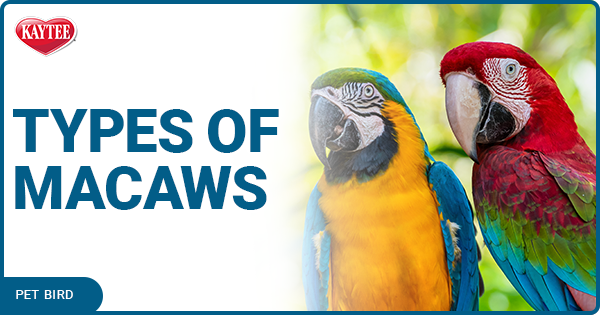
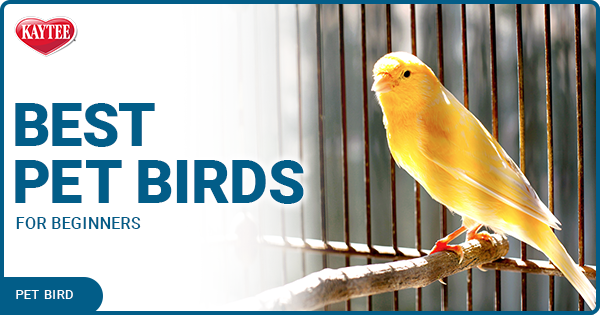
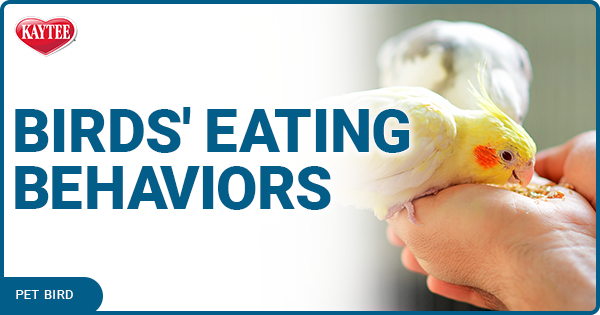
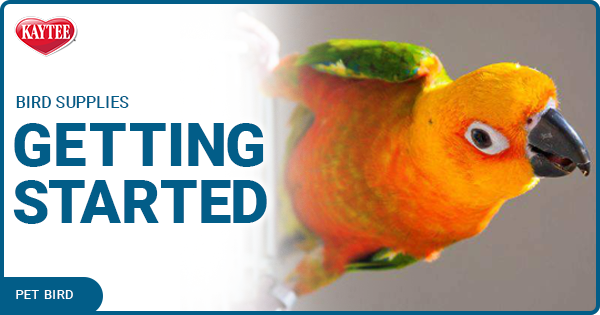
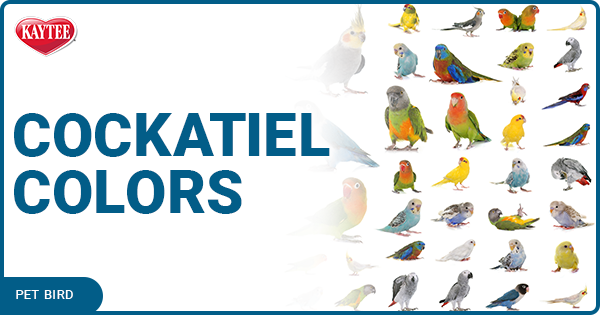
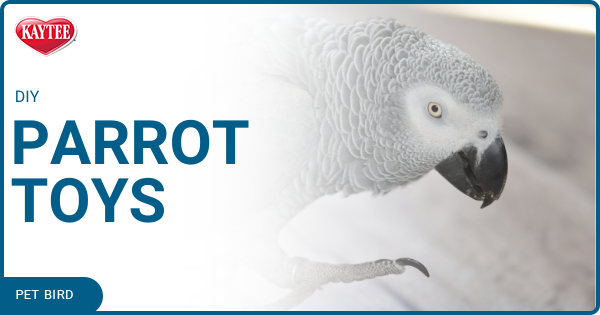
.png?h=315&iar=0&w=600&hash=D97DB36D5E3F21371C65308B485A4F28)
